The Salesforce Marketing Personalization Scale
- May 16, 2023
- Pardot Personalization, Salesforce Ben | The Drip
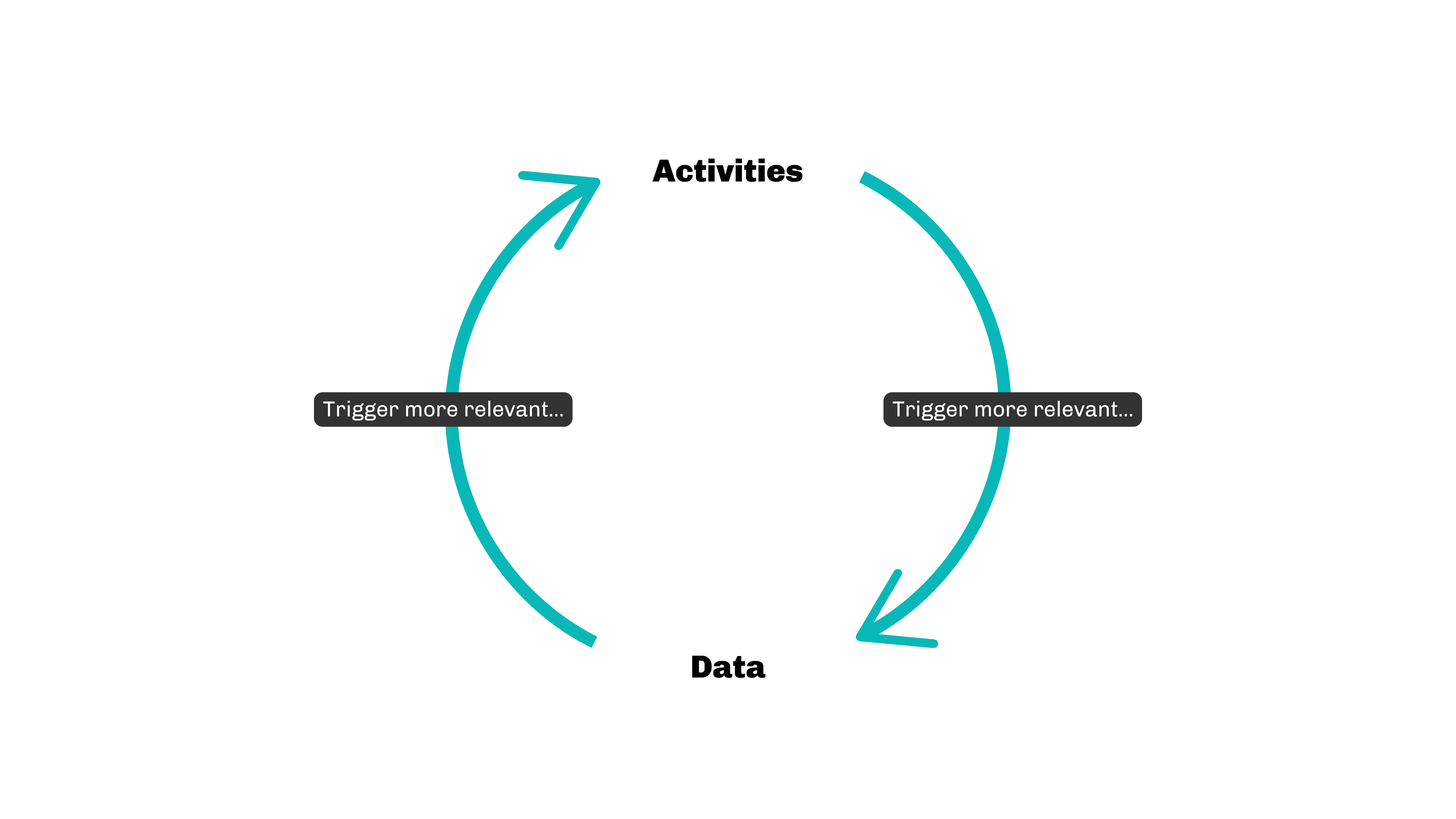

Personalization in the Salesforce marketing space can be a challenging topic to ‘pin down’. For one, there are two Salesforce marketing products; although under the “Marketing Cloud” brand, Marketing Cloud and Account Engagement (Pardot) are two distinct platforms with different personalization tools.
Second of all (and I would argue, most important), is how we define ‘personalization’. Are we talking about content personalization (e.g. merge fields) or relevant timing of activities? When pausing to think about it, relevancy is a form of personalization – messaging that’s timed specifically for that prospect/subscriber to have the best chance of engaging.
Key takeaways: You need data to drive relevancy. You need relevancy to drive better data capture. In the race to capture more data from prospects (quantity), we can lose sight of quality. Often it’s down to one or two data points and meaningful behavioral activities that will have the greatest impact when it comes to personalization – some of the tricks in this guide will help to zero in on this.


To gather all options in one place, I’ve attempted to create a scale that locates your maturity in using personalization with Salesforce’s marketing platforms. Where do you land on the scale? And do you agree with the scale? Let’s now explore these various options.
Marketing Cloud Personalization Overview
| Data (demographic) | Relevancy (behavioral) | |
|---|---|---|
| Level 1 | Personalization Strings (AMPscript) | Triggered Emails |
| Level 2 | Dynamic Content | Journey Builder |
| Level 3 | Smart Capture/Progressive Profiling | Interaction Studio |


Personalization Strings (AMPscript)
Level 1: Data
AMPscript is a powerful scripting language you can use across emails, landing pages, SMS, and push notifications in Salesforce Marketing Cloud. AMPscript comes in to reformat subscriber data, such as propercase to fix casing (e.g. john/JOHN → John), fallback values for blank data points, format dates, and more.
Triggered Emails
Level 1: Relevancy (behavioral)
Triggered emails in Marketing Cloud are simple, one-shot emails that confirm an action the subscriber made – for example, submitting a form. This is the most simple on the relevancy scale as there are often no follow-up actions.
Dynamic Content
Level 2: Data
Dynamic content is a Content Builder feature that allows you to access Marketing Cloud marketing assets based on subscriber information. When creating dynamic content variations, you need to assign the data values (for the attribute/s) that determine which variations, displayed as content blocks, should show – for example, show variation A for subscribers in the UK, and variation B for those located in France.
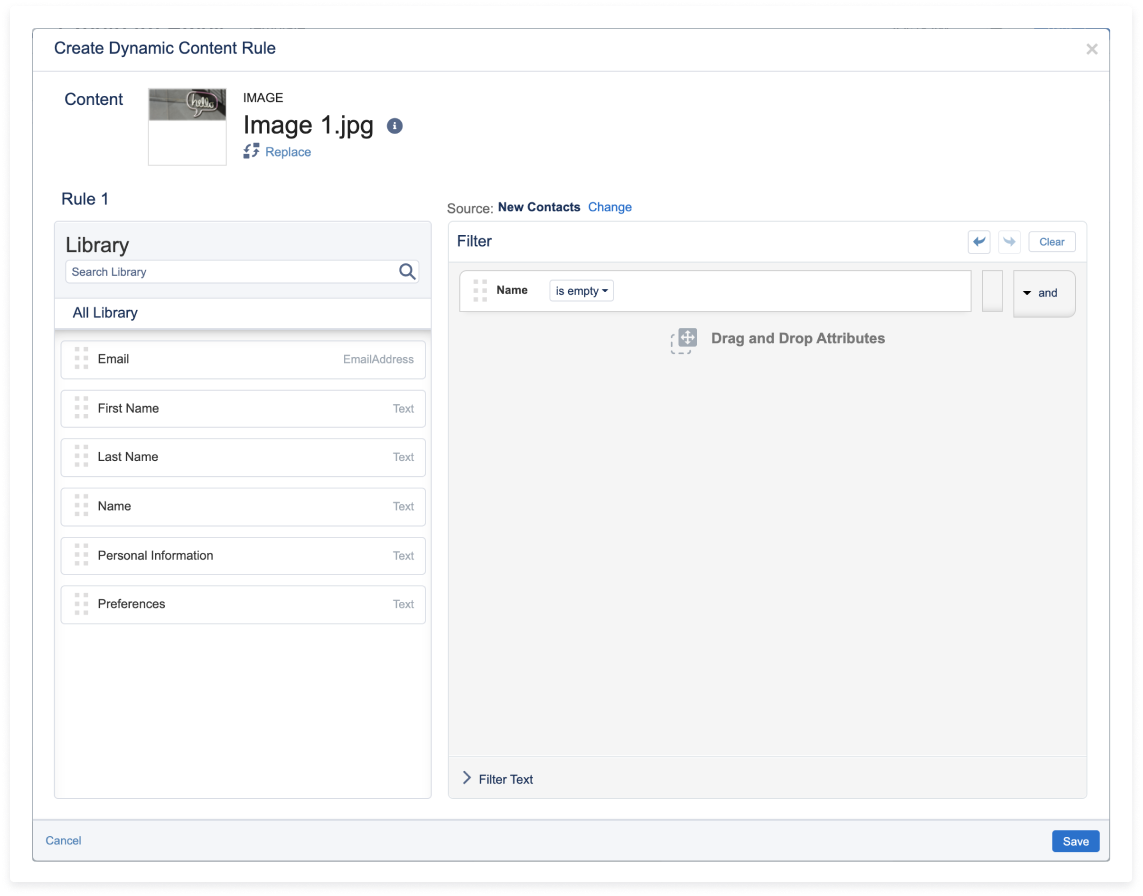

Journey Builder
Level 2: Relevancy (behavioral)
Journey Builder is designed for creating 1:1 personalized marketing journeys for your prospect and customer communications.
Thanks to its ability to bring together several communication channels within a single interface in Marketing Cloud, Journey Builder is a constantly evolving tool that enables more actions to be automated as part of customer journeys.
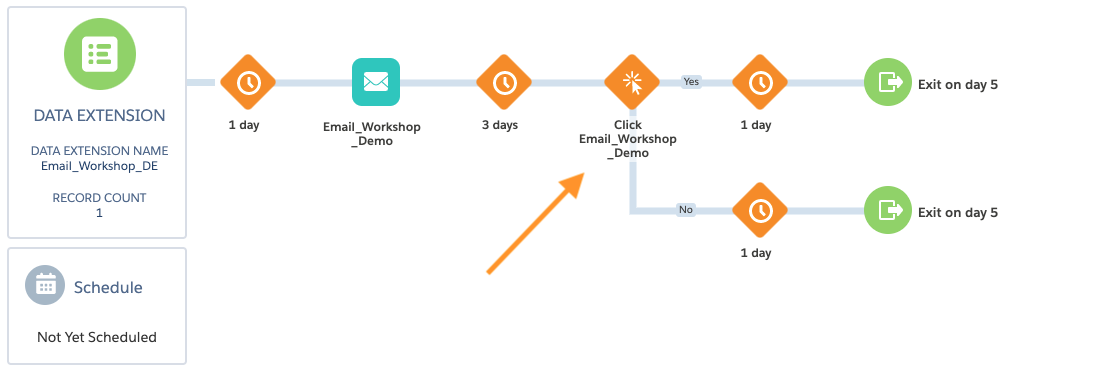

There are plenty of options to design and continually tweak your journeys, including entry sources, the ability to use Sales Cloud data, different types of decision splits, testing functionality (Path Optimizer), and more.


Smart Capture
Level 3: Data
Smart Capture forms in Marketing Cloud capture an individual’s details from a website or a landing page in a list, data extension, or an external data source. When creating smart capture forms, find the right balance between the number of form fields and capturing the data you plan to use in your segmentation.
You may have heard that shorter forms lead to higher conversion rates, but quantity may not always fit the scenario. Not only is this immediately hurting your data collection, but generic marketing is more likely to be a turn-off for prospects down the line. Consider using progressive profiling to gather data, helping you add information to an individual’s profile over time – without overwhelming data collection methods that risk them turning away. Although progressive profiling is not out-of-the-box functionality, it is possible!
Interaction Studio
Level 3: Relevancy (behavioral)
Interaction Studio (now known as Marketing Cloud Personalization) is the real-time interaction management (RTIM) solution offered by Marketing Cloud. This gives marketers the ability to promote relevant products and services to their customers and prospects across channels like web, email, and mobile in real-time with offers specifically and uniquely for them.
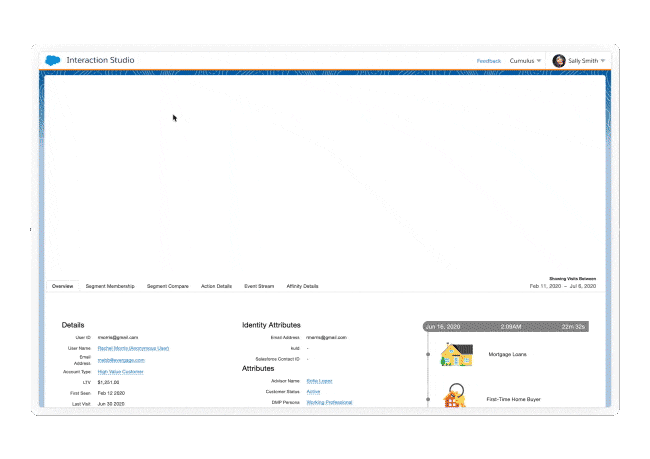

Account Engagement (Pardot) Personalization Overview
| Data (demographic) | Relevancy (behavioral) | |
|---|---|---|
| Level 1 | Merge Fields | Autoresponders |
| Level 2 | Dynamic Content (AKA “Advanced”) | Engagement Studio |
| Level 3 | Progressive Profiling | External Actions/External Activities |


Merge Fields
Level 1: Data
Pardot merge fields enable you to easily add personalization because they dynamically pull in data specific to the prospect that is viewing your Pardot marketing assets – including emails, email, dynamic content, landing pages, forms, and user email signatures.
While it’s the most basic form of personalization, you can get more creative by using IF/ELSE statements to conditionally show and hide content based on parameters.
The merge picker is a menu of available fields to merge and which objects they belong to, with a search box and categories for easier navigation.
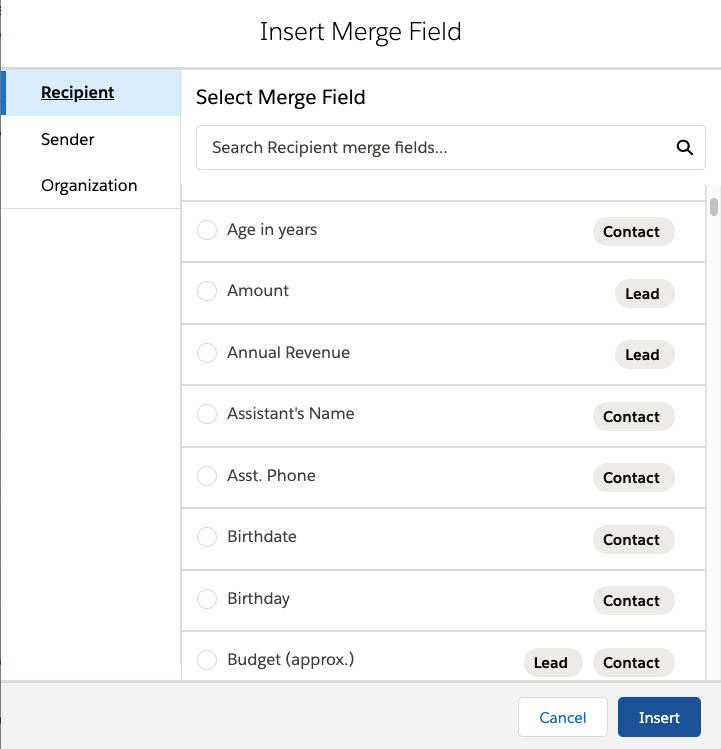

Autoresponders
Level 1: Relevancy (behavioral)
Just like triggered emails in Marketing Cloud, autoresponders are simple, one-shot emails that confirm an action the prospect made – for example, submitting a form. This is the most simple on the relevancy scale as there are no follow-up actions.
Dynamic Content
Level 2: Data
Dynamic content (also known as “advanced” dynamic content) is how you can personalize “Account Engagement” marketing assets based on prospect information. When creating dynamic content variations, you need to assign the data values that determine which variations should show.
Dynamic content can only be based on a single field, which can feel restrictive… or, so you thought! Lori shared valuable tricks for taking your dynamic content further:
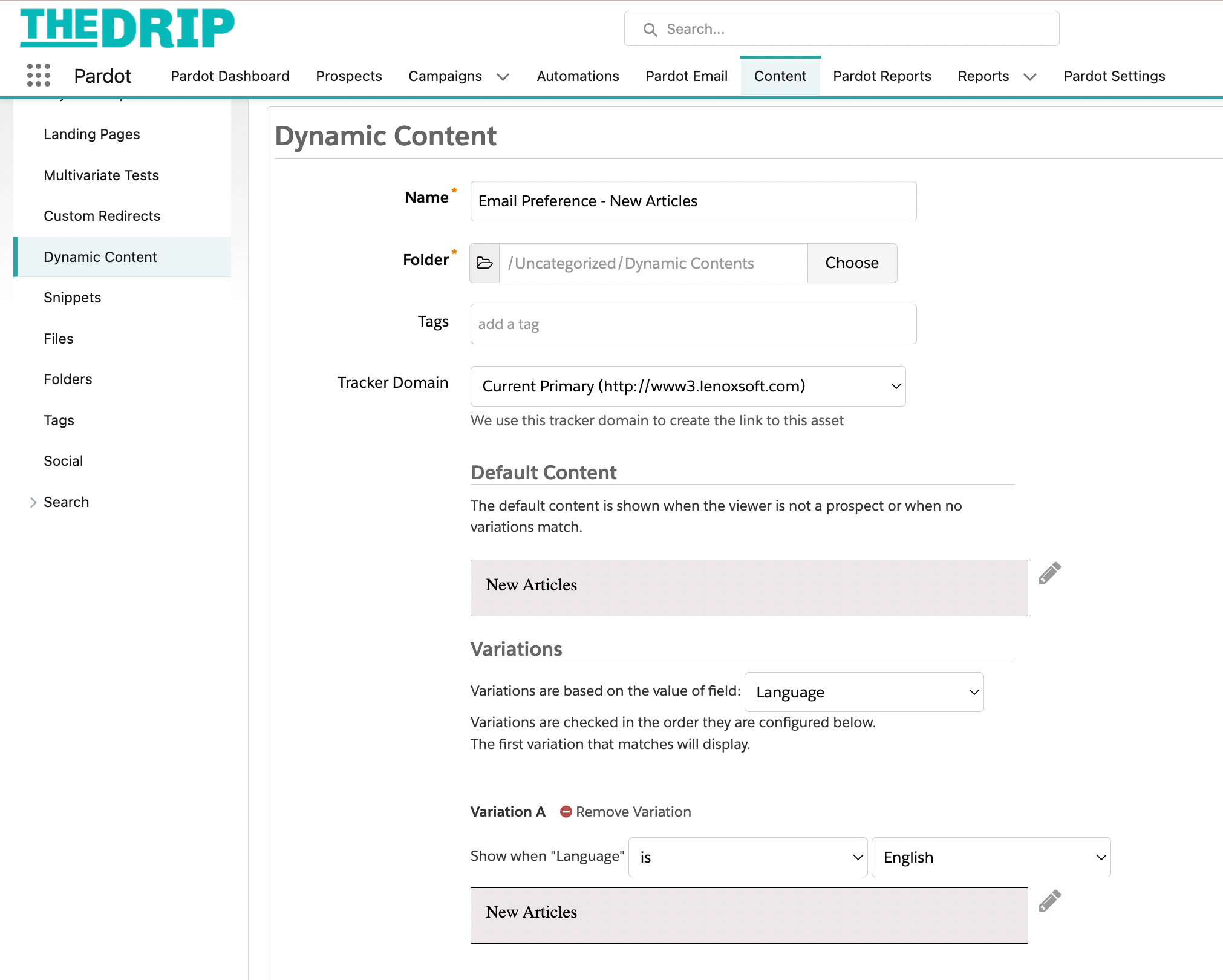

Engagement Studio
Level 2: Relevancy (behavioral)
The main aim of Account Engagement (Pardot) Engagement Studio is to set up campaign automation that treats each prospect as an individual – in other words, they progress through the program at a pace according to their level of engagement or field data. Marketers design these paths using a combination of action, trigger, and rule steps.
Engagement Studio can cater to many use cases, but it’s down to you to get advanced with more branching logic. For example, complex rules enable you to get more granular with the prospects you’re sending down one path versus another.
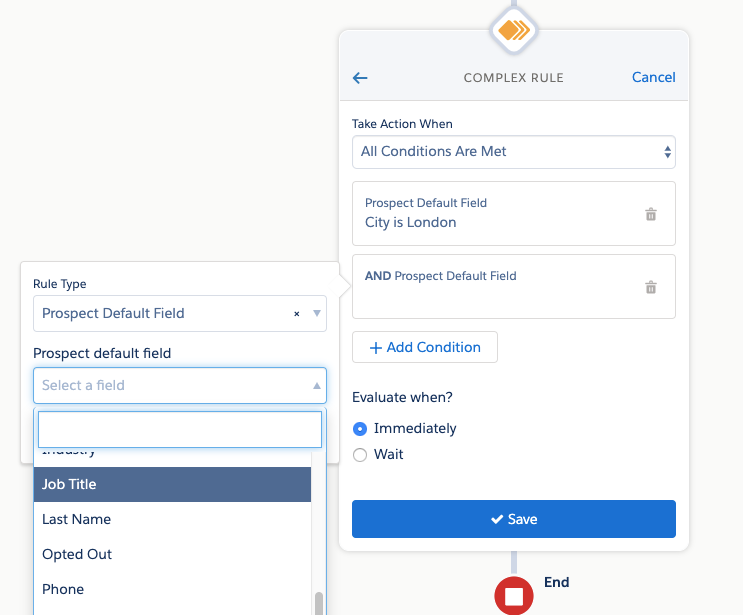

Progressive Profiling
Level 3: Data
Progressive Profiling is an out-of-the-box Pardot Form feature. When a prospect returns to a form, only form fields the prospect has not previously completed will be shown. For example, if we already know a prospect’s job title, the next time they return to the form, we can ask which marketing automation platform they’re using.
Pardot Progressive Profiling is really helpful in enabling you to collect more data from prospects as they continue to engage with you via form submissions – you’re more likely to get a higher form conversion rate because you’re not bombarding the prospect with a long form to complete.
As a result? You’re collecting more data and making the form more ‘personalized’ by not asking the same questions each time.
External Actions/External Activities
Level 3: Relevancy (behavioral)
This may seem like an unusual entry, but let’s see why it’s included on the scale.
In order to drive relevant activities, you need the complete picture of a prospect’s engagement. Oftentimes, these activities can be done via platforms external to Account Engagement (Pardot) – for example, a webinar platform.
External Actions and External Activities work in tandem to feed insights into Account Engagement (Pardot), and make activities actionable with the automation that Account Engagement (Pardot) offers.
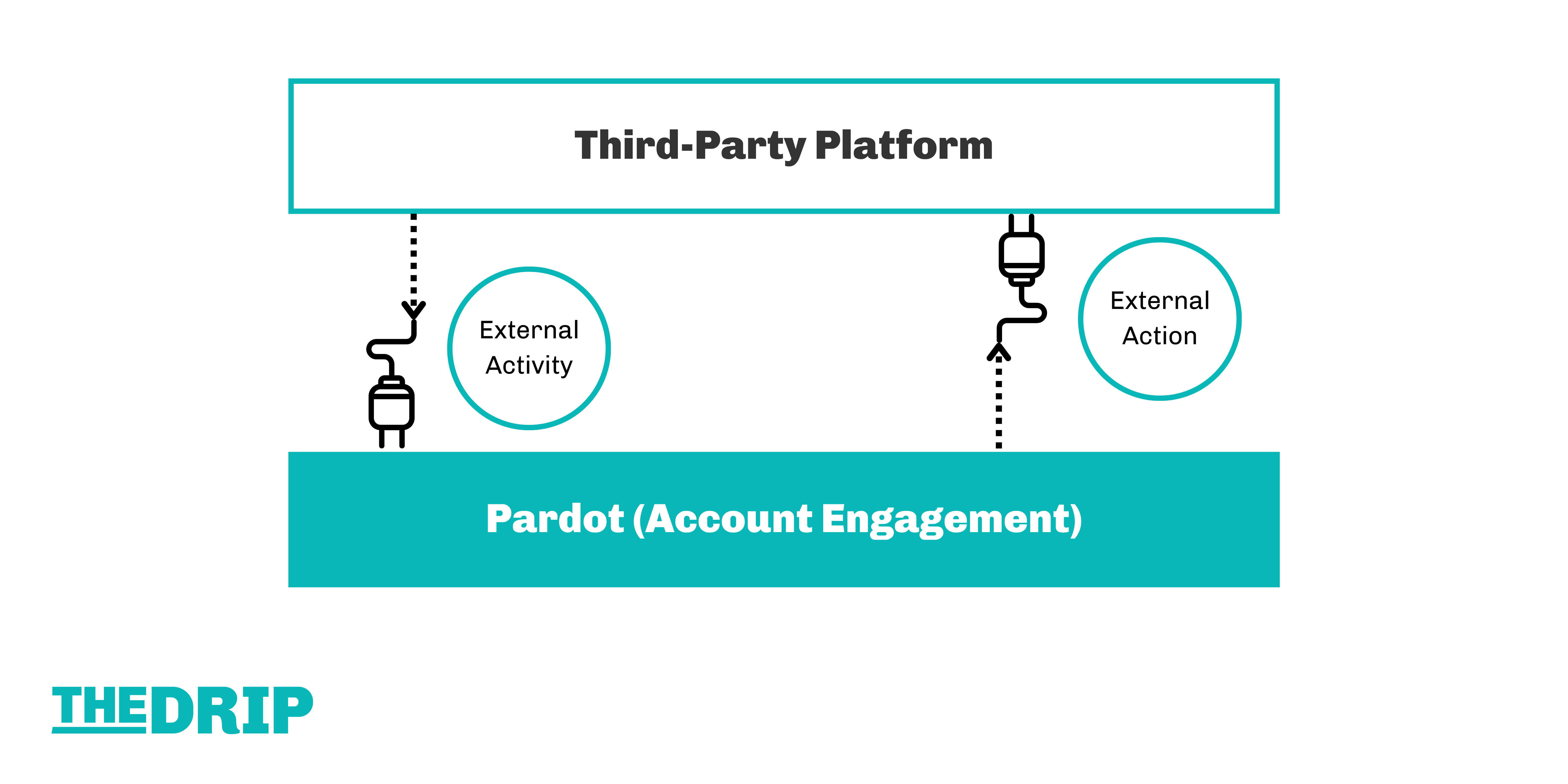

- External Actions extend your reach, allowing you to take actions on prospects outside of Pardot (Account Engagement). External actions allow us to interact with these systems via Engagement Studio and post data out to them.
- Setting up a Marketing App Extension for each external app enables you to create an External Activity Type. You can have multiple Activity Types per Marketing App Extension – for example, engagement data from a survey app could be “Survey completed” or “Survey abandoned”.
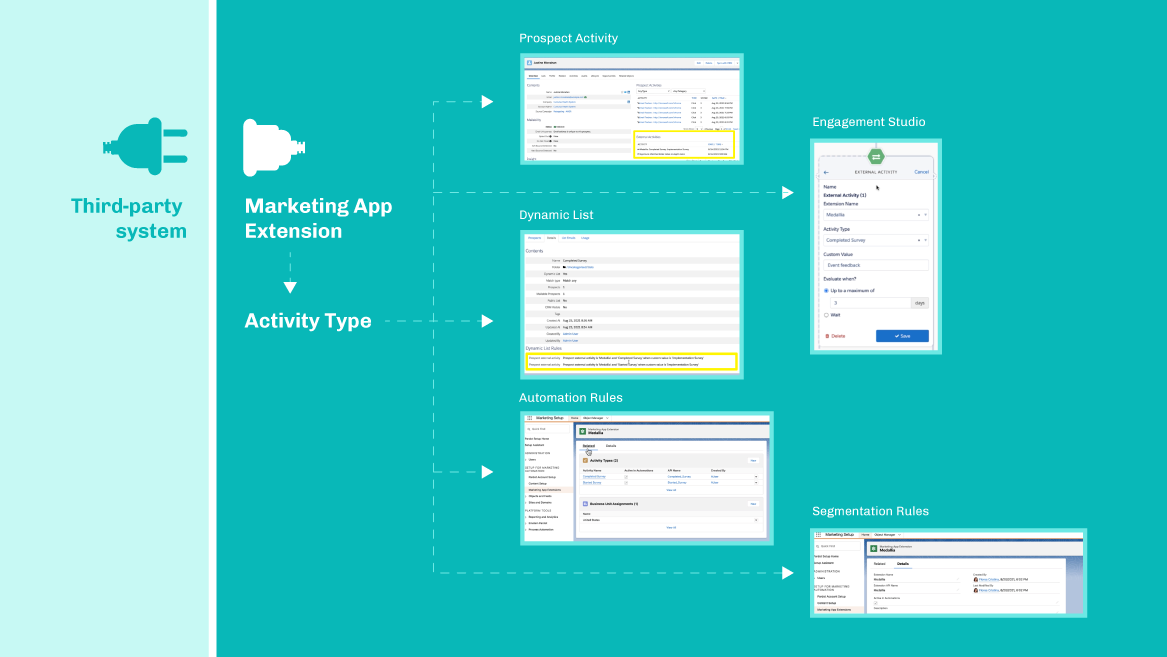

Summary
As mentioned earlier, personalization in the Salesforce marketing space can be challenging to pin down. To gather all options in one place, I’ve attempted to create a scale that locates and identifies your maturity in using personalization with Salesforce’s marketing platforms – Marketing Cloud and Account Engagement (Pardot).
Here are my top takeaways: You need data to drive relevancy, and you need relevancy to drive better data capture. Inevitably, in the pursuit of more data from prospects (quantity), we can lose sight of quality. Often it’s down to one or two data points and meaningful behavioral activities that will have the greatest impact when it comes to personalization.
So, where do you land on this scale, and do you agree with it?
This Pardot article written by:
Salesforce Ben | The Drip
Lucy Mazalon is the Head Editor & Operations Director at Salesforceben.com, Founder of THE DRIP and Salesforce Marketing Champion 2020.
Original Pardot Article: https://www.salesforceben.com/the-drip/salesforce-marketing-personalization-scale/
Find more great Pardot articles at www.salesforceben.com/the-drip/
Pardot Experts Blog
We have categorized all the different Pardot articles by topics.
Pardot Topic Categories
- Account Based Marketing (ABM) (8)
- Business Units (13)
- ChatGPT / AI (3)
- Completion Actions (5)
- Connectors (10)
- Custom Redirects (4)
- Demand Generation (8)
- Dynamic Content (5)
- Einstein Features (11)
- Email Delivery (18)
- Email Open Rates (3)
- Pardot A/B Testing (2)
- Email Mailability (16)
- Do Not Email (1)
- Double Opt-in (2)
- Opt Out / Unsubscribe (14)
- Email Preferences Page (6)
- Engagement Studio (14)
- Industries (1)
- Non Profit (1)
- Landing Pages (10)
- Lead Generation (1)
- Lead Management (12)
- Lead Routing (2)
- Lead Scoring (15)
- Leads (3)
- Marketing Analytics – B2BMA (9)
- Marketing Automation (1)
- Marketing Cloud (2)
- Marketing Cloud Account Engagement (4)
- New Pardot Features (6)
- Opportunities (2)
- Optimization (3)
- Pardot Admin (62)
- Duplicates (1)
- Marketing Ops (1)
- Pardot Alerts (1)
- Pardot API (2)
- Pardot Automations (3)
- Pardot Careers (12)
- Pardot Certifications (4)
- Pardot Consulting (1)
- Pardot Cookies (3)
- Pardot Custom Objects (3)
- Pardot Email Builder (7)
- Pardot Email Templates (9)
- HML (6)
- Pardot Events (16)
- Pardot External Actions (1)
- Pardot External Activities (4)
- Pardot Forms (27)
- Form Handlers (7)
- Pardot Integrations (21)
- Data Cloud (1)
- Slack (1)
- Pardot Lead Grading (5)
- Pardot Lead Source (2)
- Pardot Lightning (1)
- Pardot Migration (1)
- Pardot Nurture / Drip Campaigns (1)
- Pardot Personalization (3)
- Pardot Profiles (1)
- Pardot Releases (19)
- Pardot Sandboxes (2)
- Pardot Segmentation (4)
- Pardot Strategy (7)
- Pardot Sync (2)
- Pardot Sync Errors (1)
- Pardot Tracker Domains (5)
- Pardot Training (3)
- Pardot Vs Other MAPs (4)
- Pardot Website Tracking (2)
- Reporting (22)
- Salesforce and Pardot (29)
- Marketing Data Sharing (2)
- Pardot Users (3)
- Salesforce Automation (4)
- Salesforce Flows (1)
- Salesforce Campaigns (20)
- Salesforce CRM (3)
- Record Types (1)
- Salesforce Engage (3)
- Salesforce Queues (2)
- Security and Privacy (1)
- Tags (3)
- The Authors (483)
- Cheshire Impact (9)
- Greenkey Digital (47)
- Invado Solutions (37)
- Jenna Molby (9)
- Marcloud Consulting (6)
- Nebula Consulting (53)
- Pardot Geeks (38)
- Salesforce Ben | The Drip (235)
- SalesLabX (2)
- Slalom (2)
- Unfettered Marketing (45)
- Uncategorized (1)
- Website Tracking (2)
- Website Search (1)
More Pardot Articles
See all posts
This Pardot article written by:
Salesforce Ben | The Drip
Lucy Mazalon is the Head Editor & Operations Director at Salesforceben.com, Founder of THE DRIP and Salesforce Marketing Champion 2020.
Original Pardot Article: https://www.salesforceben.com/the-drip/salesforce-marketing-personalization-scale/
Find more great Pardot articles at www.salesforceben.com/the-drip/


